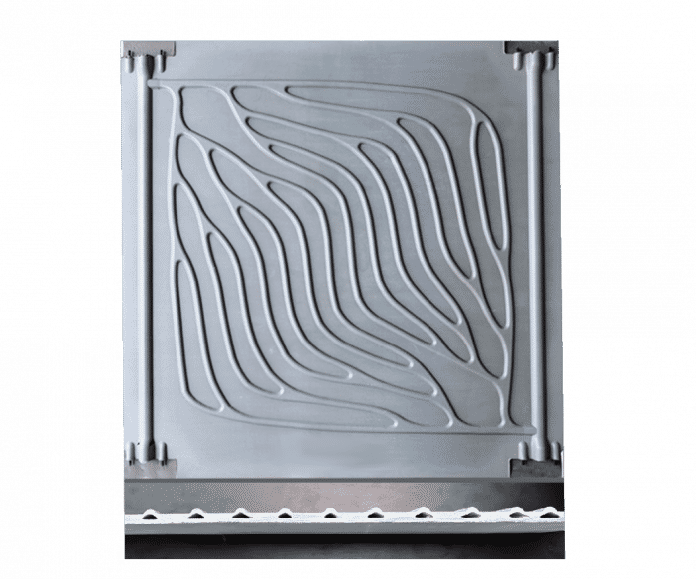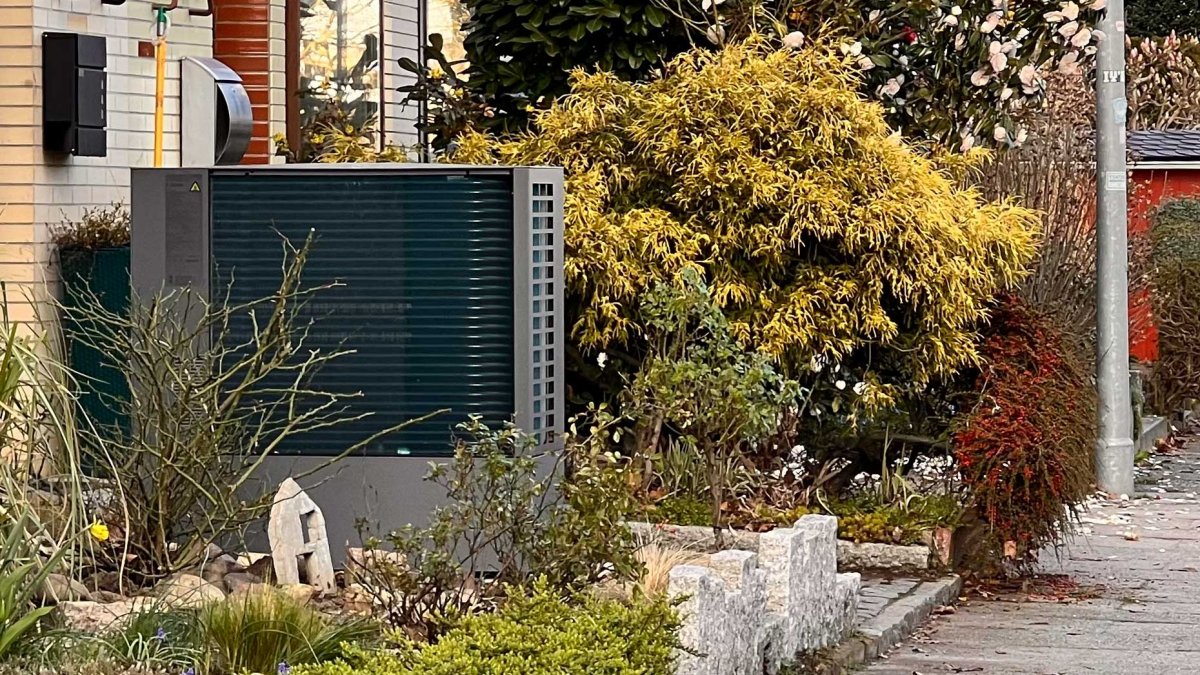If you want to operate a heat pump, you need a heat source. And that usually needs space – be it for drilling a geothermal probe, for setting up an air heat exchanger, for combined PV solar thermal modules on the roof or even for a horse manure silo. This is especially a problem with apartments. The Fraunhofer Institute for Solar Energy Systems ISE has now brought another heat source into play: the facade.
As part of the Tabsolar III research project, it and its partners have developed heat exchangers made from ultra-high-performance concrete. They are criss-crossed by channels that an algorithm has designed based on nature’s model, with “multiply branched, ‘fractal’ structures such as blood vessels or leaves,” as Fraunhofer ISE writes. A liquid circulates in them, which gives off its heat to the heating system. “With this method, almost any shape can be provided with a network of channels through which the flow flows evenly,” inform the Fraunhofer researchers. “At the same time, they have the technical advantage that they lead to an even flow with low energy consumption for the pump.”
The size of the new facade modules
For the façade elements, the researchers had to reconcile various, sometimes contradictory, goals. Larger modules, for example, are more efficient, but also more unwieldy. In the end, the researchers decided on a size of 1.75 square meters each.
The modules are available in two variants. One is glazed and has a coating that absorbs a large proportion of the sunlight but only emits a small amount of long-wave infrared heat radiation. This greenhouse effect provides sufficiently high temperatures to support hot water production or heating directly.

Rear side of a TABSOLAR element with bionic FracTherm channel structure, lateral collecting channels and hydraulic connection sockets (above) as well as a section through a TABSOLAR element (lower part of the image).
(Bild: © G.tecz Engineering GmbH)
The version without glass is available in different colors and surfaces. This means that it can be integrated into a facade in a way that makes it less noticeable. However, it also delivers less high temperatures, which still have to be raised to the necessary level by a heat pump. “According to our simulations, the available facade surfaces in new buildings or renovated existing buildings can be sufficient for this purpose,” says Michael Hermann from Fraunhofer ISE, project coordinator. In other words: The heat pumps no longer need any other heat source.
The current elements are intended for “rained curtain walls”. “In the future, however, they are also conceivable in thermal insulation composite systems or sandwich wall structures,” explains the Fraunhofer Institute. The modules are now to be tested in a two-family house in Kassel.
Another research project by the Fraunhofer Institutes for Building Physics (IBP) and for Energy Economics and Energy System Technology (IEE) goes one step further: It wants to integrate the entire heat pump with PV module and ventilation technology into the facade.

(hrm)
